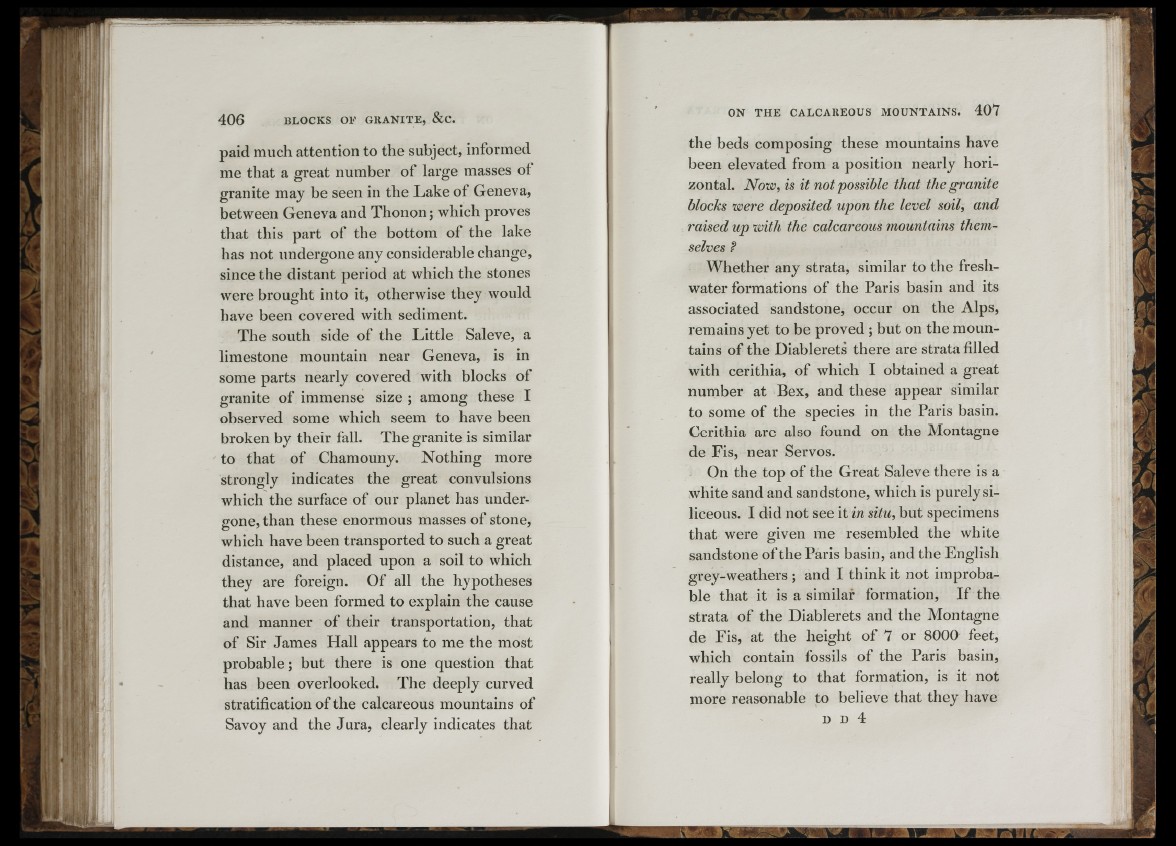
BLOCKS OF GRANITE, &C.
paid much attention to the subject, informed
me that a great number of large masses oi
granite may be seen in the Lake of Geneva,
between Geneva and Thonon; which proves
that this part of the bottom of the lake
has not undergone any considerable change,
since the distant period at which the stones
were brought into it, otherwise they would
have been covered with sediment.
The south side of the Little Saleve, a
limestone mountain near Geneva, is in
some parts nearly covered with blocks of
granite of immense size ; among these I
observed some which seem to have been
broken by their fall. The granite is similar
to that of Chamouny. Nothing more
strongly indicates the great convulsions
which the surface o f our planet has undergone,
than these enormous masses of stone,
which have been transported to such a great
distance, and placed upon a soil to which
they are foreign. Of all the hypotheses
that have been formed to explain the cause
and manner of their transportation, that
of Sir James Hall appears to me the most
probable; but there is one question that
has been overlooked. The deeply curved
stratification o f the calcareous mountains of
Savoy and the Jura, clearly indicates that
ON THE CALCAREOUS MOUNTAINS. 407
the beds composing these mountains have
been elevated from a position nearly horizontal.
Now, is it not possible that the granite
blocks were deposited upon the level soil, and
raised up with the calcareous mountains themselves
?
Whether any strata, similar to the freshwater
formations of the Paris basin and its
associated sandstone, occur on the Alps,
remains yet to be proved ; but on the m ountains
o f the Diablerets there are strata filled
with cerithia, of which I obtained a great
number at Bex, and these appear similar
to some of the species in the Paris basin.
Cerithia are also found on the Montagne
de Fis, near Servos.
On the top of the Great Saleve there is a
white sand and sandstone, which is purely siliceous.
I did not see it in situ, but specimens
that were given me resembled the white
sandstone of the Paris basin, and the English
grey-weathers ; and I think it not improbable
that it is a similar formation. I f the
strata of the Diablerets and the Montagne
de Fis, at the height of 7 or 8000 feet,
which contain fossils of the Paris basin,
really belong to th at formation, is it not
more reasonable to believe that they have
D D 4